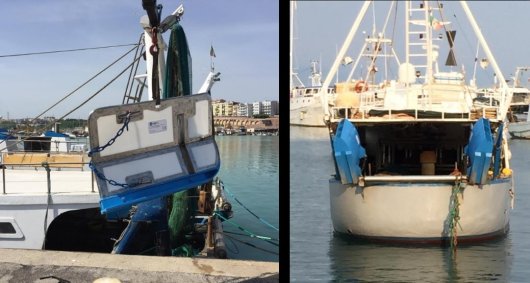
category_news
From demersal to (semi-) pelagic otter boards
Otter trawling is the dominant fishing method used in European Seas. In this type of fisheries, the mouth of the net is held open by two doors that penetrate deep into the sediment. In BENTHIS, a series of innovative otter boards, developed together with the industry, were studied in the Mediterranean and the Bay of Biscay. The innovate gear consist of spreading boards that fly over the seafloor (pelagic doors) or that jump over the sediment (semi-pelagic).
The results show that a shift from traditional demersal otter boards to novel (semi-) pelagic otter boards will reduce the penetration of the gear, and will reduce the drag and resuspension of sediments. However, the overall footprint, or surface area of the seafloor swept by the gear per unit of time, is mainly affected by the ground rope and was therefore not reduced. Also the catch per unit of effort appears to be unaffected and the fuel consumption is reduced.
The uptake of the innovation is hampered by the investment costs and the operational demands of handling the (semi-) pelagic doors. However, some of the otterboards tested and developed within the BENTHIS project entered in the Mediterranean market of bottom otter trawling segment.

Animations
- Unfortunately, your cookie settings do not allow videos to be displayed. - check your settings
- Unfortunately, your cookie settings do not allow videos to be displayed. - check your settings
